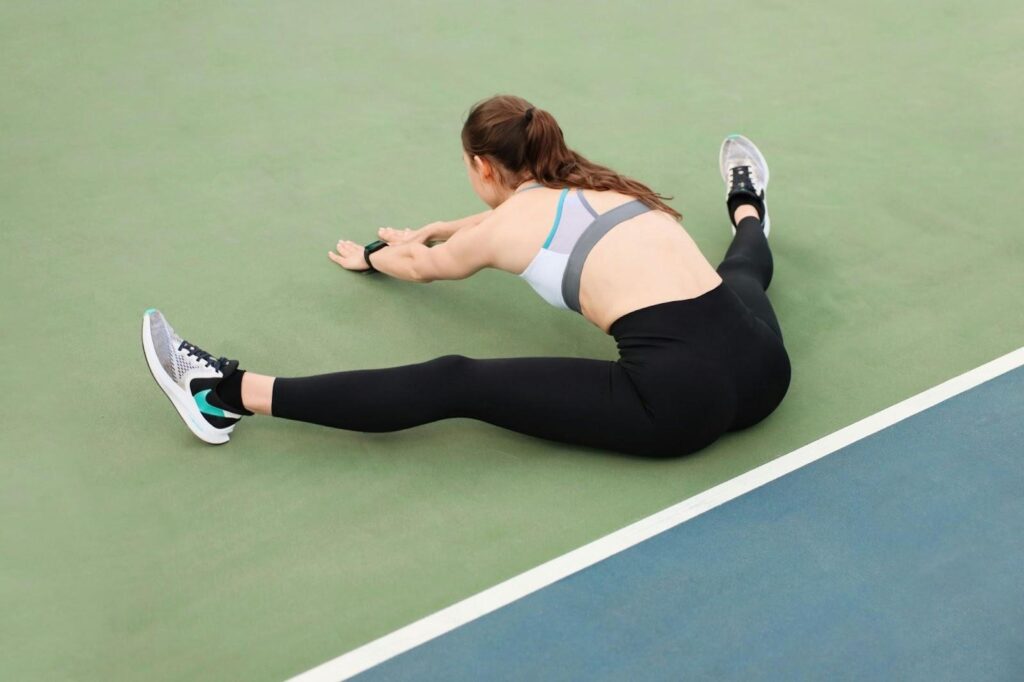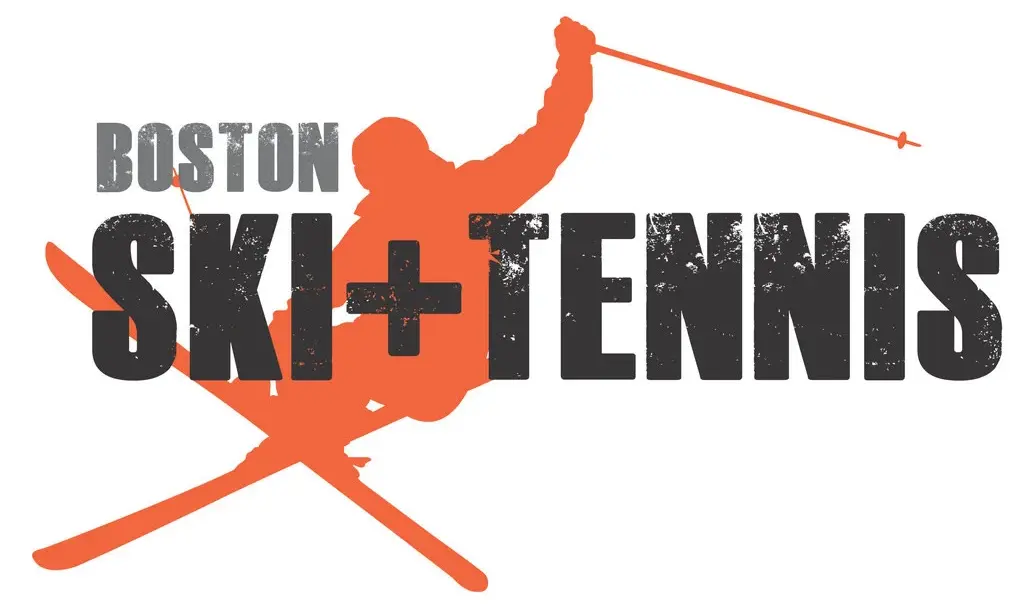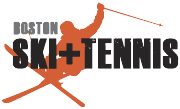Cross-training for tennis/pickleball players

Pickleball and tennis are becoming increasingly popular among fast-paced athletes. These two sports share similar fundamentals and often have players cross-train for both. But how is it done? Cross-training, to begin with, involves incorporating two or more physical activities together to enhance your primary or preferred sport. Given their similarities, tennis and pickleball make it easy to develop a well-designed cross-training program. This article will walk you through what to do to build a more agile body that can directly help with better performance for either tennis or pickleball. Boston Ski + Tennis is here to help you become a more durable and dominant player, no matter what sport you prefer. Read on for more!
Why Court Time Isn’t Enough: The Case for Cross-Training
If you play tennis or pickleball quite frequently, you may be surprised to know that it still isn’t necessarily enough time to get you in peak training mode. You’re using a lot of one-sided movements like your forehand, dink shot, and serve. This can just continue to put stress and tension on those same muscles. With cross-training for tennis players, you’re working those muscles that aren’t always being used, which could help your overall performance. When you’re only working out specific muscles, you could put yourself at risk for sports injuries like tennis elbow or rotator cuff pulls and tears. You want to avoid this by creating a more stable and balanced workout.
By incorporating cross-training in your workouts, you’re not only helping your performance, you’re also working on your overall athletic profile. For example, you’ll feel improvements in pickleball endurance exercises, strength, mobility, and more. This can then result in more power or control in your shots, more stamina to play longer games, and better agility to get those hard-to-reach balls.
Building Balance and Stability Training
Tennis and pickleball strength training is a whole other battle when it comes to building power and stability. With tennis and pickleball, it’s not any easier either. Don’t think about it as simply hitting the ball harder. Think about it being more about having the strength to generate enough force and control through every swing and stride. A targeted strength program will improve your shot power, serve speed, and court coverage.
Foundational Compound Lifts
A good exercise in building your power and strength on and off the court is compound lifts or exercises that incorporate compound movements. See below for what kind of exercise examples we think best fit for coordinated actions on the pickleball or tennis courts:
- Squats: The squat is the king of lower-body exercises. It strengthens your glutes, quads, and hamstrings, which are the primary power generators for your groundstrokes and serves. Proper squat form. Try keeping your chest up and weight in your heels. This teaches you to generate force from your legs, not just your arms. Aim for 3 sets of 8-12 repetitions.
- Deadlifts: Deadlifts build powerful posterior chain strength in your glutes, hamstrings, and lower back. This is critical for maintaining an athletic stance and for the explosive hip hinge motion used in serving and hitting overheads. Start with light weight to master the form and perform 3 sets of 5-8 reps.
- Overhead Press: This exercise strengthens the shoulders and triceps, crucial for stabilizing the shoulder joint during serves and smashes. A strong overhead press can increase serve velocity and reduce the risk of rotator cuff injuries. Perform 3 sets of 8-12 reps with dumbbells or a barbell.
- Rows: Since racquet sports heavily work the front of your body (chest and front deltoids), it’s vital to strengthen the back. Rows, whether bent-over, cable, or dumbbell, balance out your physique by building the lats and rhomboids. This postural strength helps prevent shoulder impingement and improves your rotational power. Aim for three sets of 10-15 reps.
Main Core Workouts for Racquet Sports
You’ll want your core ready to play, because having these kinds of muscles can help with balance and strengthen the connection between your upper and lower body. Read below on some exercise examples we think are best to build up your core:
- Lunges: Lunges are brilliant for racquet sports because they mimic the on-court movement of stepping into a shot. They improve single-leg strength, balance, and hip mobility. Incorporate forward, reverse, and lateral lunges to train in all planes of motion.
- Kettlebell Swings: This dynamic exercise develops explosive hip power, cardiovascular endurance, and grip strength. The hip-hinge motion is directly transferable to generating rotational force in your groundstrokes.
- Planks: The plank is a fundamental core workout for racquet sports. A strong core transfers energy efficiently from your legs to your racquet. Hold a standard plank, and also incorporate side planks to strengthen the obliques, which are vital for rotational movements.
- Medicine Ball Slams and Throws: These explosive movements build core power and coordination. Rotational throws, where you twist and throw a medicine ball against a wall, directly simulate the motion of a forehand or backhand.
Cardiovascular Conditioning to Go the Distance
Everyone knows tennis and pickleball are all about conditioning and keeping up with your opponent on a cardiovascular level. It can be the thing that wins or loses a match. Think about a five-set tennis match or a long pickleball tournament, which can test anyone’s physical limits. Strong cardiovascular fitness means you’ll be just as sharp and powerful in the final points as you were in the first. Cross-training your cardio system improves your stamina, recovery time between points, and overall work capacity. Read below about the different types of cardio for racquet sports and the exercises we recommend.
Steady-State Cardio
Tennis and pickleball athletes require steady-state cardio that involves maintaining a moderate intensity for an extended period (30 minutes or more). This builds your aerobic base, allowing your body to use oxygen more efficiently. Here are some exercise examples to incorporate in your cross-training routine:
- Running/Jogging: A classic for a reason, running is a great way to build endurance. To protect your joints, try running on softer surfaces, such as trails or a track.
- Cycling: Cycling is a fantastic low-impact option that builds serious leg strength and cardiovascular fitness without the pounding of running. It’s an excellent choice for active recovery days.
- Swimming: Perhaps the best low-impact cardio exercise, swimming provides a full-body workout. The water supports your body, giving your joints a much-needed break while still challenging your heart and lungs.
High-Intensity Interval Training (HIIT)
If you regularly work out already, you may be familiar with HIIT workouts. These stand for high-intensity interval training. HIIT involves short bursts of all-out effort followed by brief recovery periods. This type of training is incredibly effective for mimicking the stop-and-start nature of a tennis or pickleball match. See below some examples of what kind of HIIT workouts you may want to consider:
- Sprints: Find a field or track and perform sprints of 50-100 yards, followed by a walk or slow jog back to the start. Repeat this 8-10 times. This builds anaerobic capacity, which helps you recover quickly after an intense, lung-busting point.
- Assault Bike or Rower: These machines are perfect for HIIT workouts. A popular protocol is the Tabata: 20 seconds of maximum effort followed by 10 seconds of rest, repeated for 8 rounds (4 minutes total). It’s brutal but highly effective.
- Court Suicides/Sprints: Set up cones at the baseline, service line, and net. Sprint to each line and back. This not only improves your fitness but also your on-court footwork and change-of-direction speed.
Move Better, Play Better: Flexibility and Mobility
Another key area to focus on when cross-training for pickleball or tennis is your flexibility and mobility. This is where those last extensions to get the ball of movement of the feet can really play a key part in winning the game. Power and endurance are useless if your body is too tight to move efficiently. Flexibility (the ability of a muscle to lengthen) and mobility (the ability of a joint to move through its full range of motion) are critical for preventing injuries and executing shots with proper technique.
Dynamic Stretching
It’s extremely important to incorporate some sort of stretching before your play or workout. It doesn’t matter how old you are; dynamic stretches are active movements that warm up your muscles and prepare your body for activity. See below some stretches to consider:
- Leg Swings (Forward and Sideways): Loosens up the hips and hamstrings.
- Arm Circles: Warms up the shoulder joint.
- Torso Twists: Prepares the core and back for rotation.
- Walking Lunges with a Twist: A great full-body warm-up that activates the legs, hips, and core.
Static Stretching and Foam Rolling
Another way to stretch is to do static stretching. This is where you hold a stretch for about a minute. It can help lengthen tight muscles and improve overall flexibility. Focus on these key areas for racquet sport players:
- Hip Flexors: Often tight from sitting and the ready stance.
- Hamstrings: Crucial for sprinting and bending.
- Shoulders and Chest: Counteract the forward-rounding caused by hitting thousands of forehands.
- Forearms: Helps prevent tennis and golfer’s elbow.
Also, foam rolling, or self-myofascial release, is another excellent recovery tool. Rolling out your quads, IT bands, lats, and thoracic spine can relieve muscle soreness, break up knots, and improve mobility.
Yoga and Pilates
Another way to really help with stretching is to attend some yoga or pilates classes. Both yoga and pilates are phenomenal cross-training activities. Yoga focuses on flexibility, balance, and body awareness through a series of poses and flows. Pilates places a heavy emphasis on core strength, stability, and precise control of movement. Regular practice of either discipline can dramatically improve your mobility, help with injury prevention in tennis and pickleball, and build a stronger mind-body connection.
Putting It All Together: A Sample Weekly Schedule
Ready to incorporate cross-training into your routine? You don’t need to live at the gym; the key is finding balance. Consider starting with a structured weekly schedule for your exercises. Here’s an example for a dedicated player who plays 3-4 times per week.
- Monday: Tennis/Pickleball match or tennis agility drills session. Post-match static stretching.
- Tuesday: Full-Body Strength Training. Focus on compound lifts (Squats, Rows, Overhead Press). Finish with core work.
- Wednesday: Low-Impact Cardio for racquet sports. 30-45 minutes of cycling or swimming. Focus on recovery.
- Thursday: Tennis/Pickleball match or drill session. Post-match foam rolling.
- Friday: High-Intensity Day. HIIT workout (e.g., sprints or medicine ball slams) or a sport-specific workout focusing on agility drills and footwork.
- Saturday: Tennis/Pickleball play.
- Sunday: Active Recovery/Mobility. A long walk, a yoga class, or a dedicated session of foam rolling and static stretching.
Summary
Overall, cross-training is great for any athlete, especially if you’re playing tennis or pickleball regularly. The important thing is to listen to your body and adjust this schedule as needed. If you feel tired or sore, a recovery day might be more beneficial than a high-intensity workout. The goal is to supplement your court time, not replace it or overexert yourself. If you need help on where to start as far as equipment goes, or just need advice on how to play the game, visit Boston Ski + Tennis. We’re your one-stop shop for all things sports-related. We like to think we’re the best people with the best service. You can buy online anywhere, but if you’d prefer expert advice, this is the place to be. Move better, feel stronger, last longer, and watch your game reach new heights.

